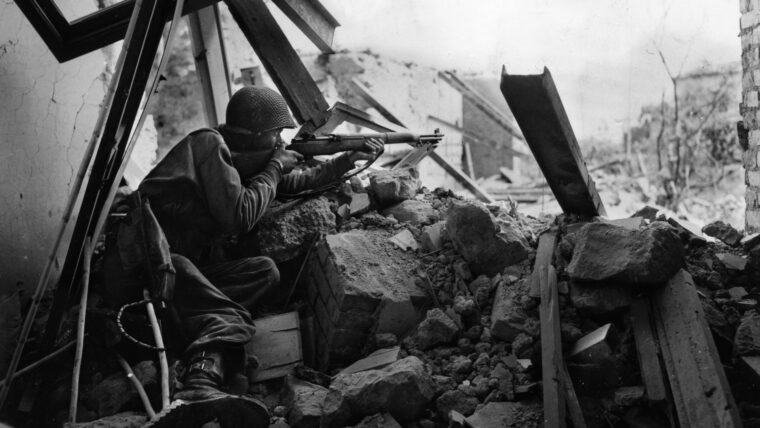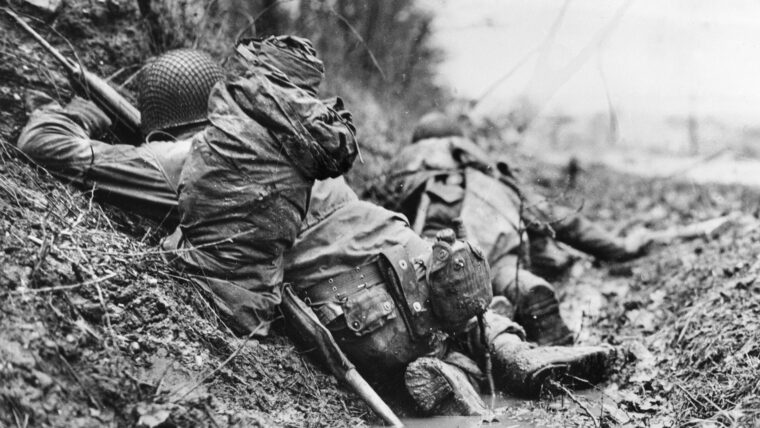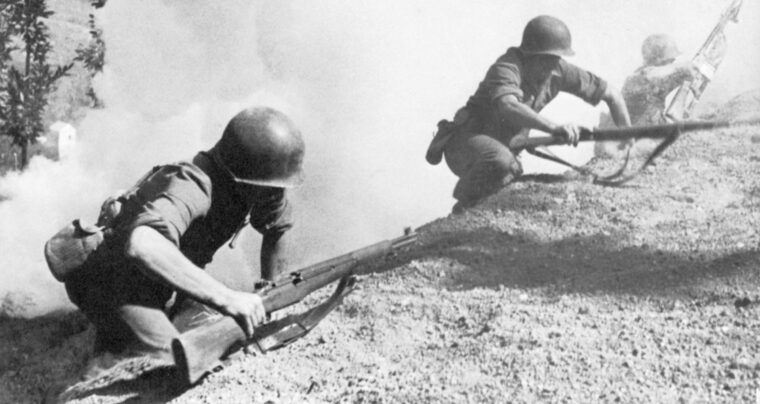
Rangers
A List of American Commanders in WWII Who Lost Their Lives
By Thomas R. CagleyGeneral George S. Patton, Jr., once said, “An army is like a piece of cooked spaghetti. You can’t push it, you have to pull it after you.” Read more

Rangers
General George S. Patton, Jr., once said, “An army is like a piece of cooked spaghetti. You can’t push it, you have to pull it after you.” Read more

Rangers
In his Maxims of War, Napoleon Bonaparte wrote, “It is exceptional and difficult to find in one man all the qualities necessary for a great general. Read more

Rangers
When Maj. Gen. Curtis Lemay, the hard-driving commander of the Twentieth U.S. Air Force based in Guam, decided to change tactics in early 1945 to boost the effectiveness of the B-29 Superfortress, it was the Bell Aircraft plant in Marietta, Georgia, that ultimately provided him with the stripped-down bombers that played such a key role in ending the war in the Pacific. Read more

Rangers
When John Sassamon’s murdered body floated up under the ice of Assawompsett Pond, Plymouth Colony, in January 1675, few Puritan homesteaders could have foretold it would lead to the bloodiest war, per capita, in American history. Read more

Rangers
They had been staring at it for the past four months. That small, rubble-strewn town of Cisterna di Littoria in central Italy just inland from the ports of Anzio-Nettuno, had become their nemesis. Read more

Rangers
Without a doubt, the U.S. Army’s Ranger battalions were considered among the elite formations of World War II. Read more

Rangers
I was born in Los Angeles in 1924 and attended local schools. In high school I enrolled in ROTC and, when I could, I went skiing for fun. Read more

Rangers
Shortly after 8 am on June 6, 1944, a German officer overlooking the Vierville-sur-Mer Draw on Omaha Beach reported that the soldiers defending the beach were repelling the Americans: “The enemy is in search of cover behind the coastal zone obstacles. Read more

Rangers
After sundown on July 17, something happened at a small port town 40 miles northeast of San Francisco that has never been fully explained…
The 7,500-ton Liberty ship SS E.A. Read more

Rangers
On the morning of June 6, 1944, the 2nd Ranger Battalion, commanded by Lt. Col. James Earl Rudder, began its ascent of a sheer 100-foot precipice called Pointe du Hoc. Read more

Rangers
On a June morning in 1942, a battalion of American soldiers stepped down from a train at Fort William in the northern highlands of Scotland. Read more

Rangers
In May 1945—70 years ago—the Supreme Headquarters Allied Expeditionary Force (SHAEF) sent out a terse, unemotional, 15-word communiqué: “The mission of this Allied force was fulfilled at 0241 local time, May 7, 1945.” Read more